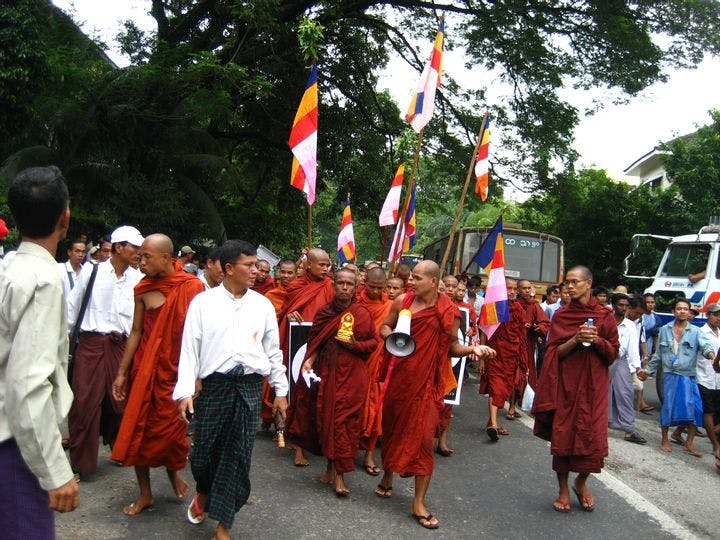Spring 2010
Saffron Sorrows
– The Wilson Quarterly
A military junta has ruled for 48 years in Myanmar, where poverty prevails and a third of children under age five suffer from malnutrition. Are monks the key to revolution?
In September 2007, the world watched in amazement as thousands of Buddhist monks in saffron robes marched through the shabby streets of Yangon, the largest city in Myanmar, protesting a devastating increase in the prices of fuel and other commodities. A hail of military gunfire brought an end to the protests and left at least 30 people dead. How close did the monks come to bringing down Myanmar’s military regime?
Not close at all, writes Mary Callahan, a political scientist at the University of Washington, Seattle. The 48-year-old junta still rules Myanmar, or Burma, as it is also known, with an iron fist. More than a decade of price controls on rice impoverished the country’s large agricultural class, and though the controls have been lifted, widespread poverty prevails. Recently discovered oil and gas reserves have strengthened the government and funded a “luxury-laden parallel universe” for military higher-ups, while a third of children under five suffer from malnutrition.
In Callahan’s view, the seeds of the regime’s domination were sown during its colonial days. When the British annexed Burma to India in 1886, they ignited a widespread insurgency in the lower and central regions of the country. The raj responded by imposing a “brutal and intrusive form of direct rule.” Traditional leaders and social structures were swept away. Rivalries between ethnic Burmans, by far the biggest minority group, and other ethnicities, such as the Kachin, Shan, and Karen, were encouraged.
World War II and a momentary Japanese occupation untethered the country from the British and ushered in a brief period of independence. But ethnic conflict continued, and in 1962 General Ne Win seized power in a military coup, ostensibly to prevent the ascendancy of a federation of minorities. Repression, command economics, and xenophobia were central features of his 26 years in power.
A panicked junta doubled the size of the army and substantially increased spending on security after student uprisings in 1988, which it ultimately quashed. Infighting among groups that could serve as opposition enhances the junta’s power. The National League of Democracy, the long-embattled political party of Aung San Suu Kyi, the 1991 Nobel Peace Prize laureate living under house arrest, is now “out of touch” with popular sentiment, Callahan observes.
When Cyclone Nargis tore through Myanmar in May of 2008, observers again watched to see if the junta, now led by General Than Shwe, would betray any weakness. Not much. A few foreign relief workers were able to enter the country, but the generals “insisted that they would take care of the needy.”
* * *
The Source: "Myanmar's Perpetual Junta" by Mary Callahan, in New Left Review, November-December 2009.
Photo courtesy of Wikimedia Commons
